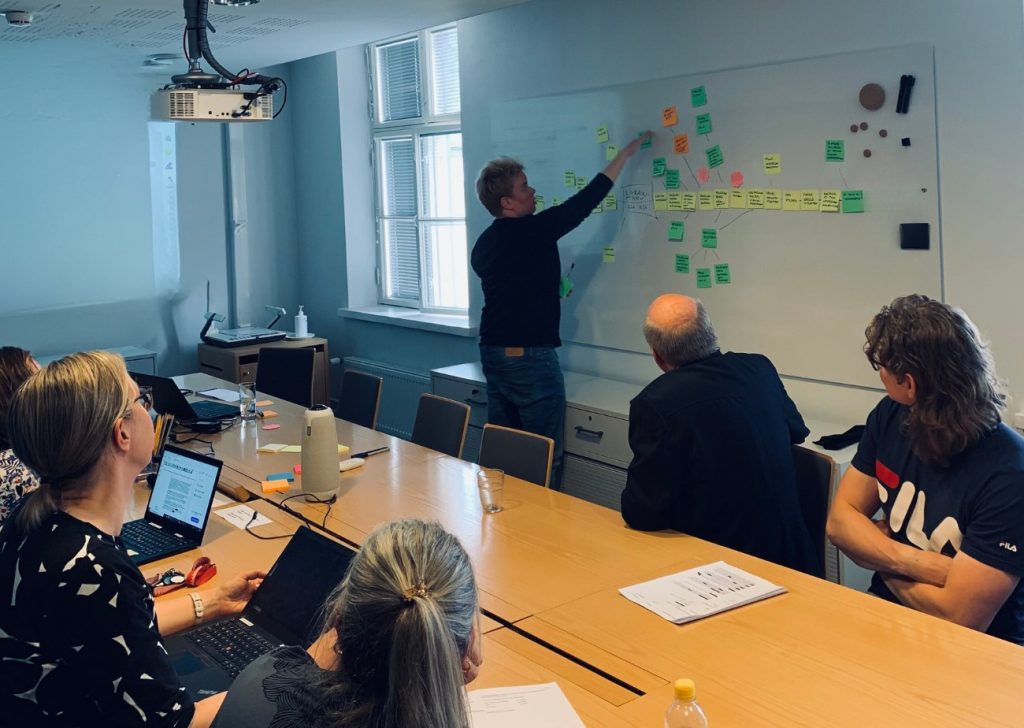Nina Toivonen och Anna Kukkola
June 2023
Law plays an important role in the City’s operations
The City Executive Office’s Legal Services can be described as the City’s own internal law firm. The clients of Legal Services are office-holders and employees working for the City who need legal support to carry out their tasks.
Law therefore plays an important role as a pillar of the City organisation and its various operations. The City is a public body which, as part of its own administrative procedure, has to fulfil a number of different legal obligations and ensure that its residents have access to their rights.
In addition to legislation, the City’s operations are governed by many of its own rules, guidelines, decisions and recommendations. However, rule-based processes are often complex and perceived differently by different people. Thus, it is not surprising that the complexity and ambiguity occasionally create a need for legal advice.
The City Executive Office’s Legal Services have recognised the potential of design to make legal support more customer-oriented and therefore more proactive.
The earlier people seek legal support and the more comprehensible and accessible the legal information is to them, the smoother it is for the City to carry out its basic tasks.
The Legal Services have used design to prepare e.g. an online training module for new City employees and office-holders, which provides learner-centred guidance on the basics of City administration and law. The aim of the training is to provide information on the key legal principles and guidelines concerning the City’s operations, but also on the legal expertise available for different situations.

Legal design makes law more comprehensible and accessible
In the City Executive Office’s Legal Services, the application of design has been supported not only by the City’s strong design strategy, but also by a specific legal design approach that combines design with law. There is no established definition for legal design, but it can refer to the application of design methods in a legal context in general (Meera Klemola & Astrid Kohlmeier, The Legal Design Book, 2021) or, more specifically, to the solution and prevention of legal problems by means of design (Legal Design Alliance: Legal Design Manifesto, 2018), particularly by improving the accessibility and comprehensibility of legal information.
Legal design is based on the idea that the actual realisation of rights can be promoted by designing legal information, processes and services to meet the needs of their users.
For example, legal documents and guidelines are not just for lawyers, but are used first and foremost by the people whose issues they concern. Making the law understandable and accessible also contributes to legal certainty: legal objectives and ideals can only be realised when people actually understand their meaning and are thus able to recognise their impact in their everyday choices.
In practice, design in a legal context can mean e.g. examining the procurement and contracting process from the perspectives of the various parties involved and inviting various stakeholder representatives to participate in the development process, as well as developing the process itself and its documents, systems and procedures in such a way that they best support the success of the parties in their respective roles. By paying attention to issues such as the comprehensible wording of tender and contract terms, it is also possible to prevent interpretation issues and disagreements arising from ambiguities in communication (Helena Haapio, Next Generation Contracts. A Paradigm Shift, 2013).
Root cause analyses illustrate the importance of proactive action
Design can also be helpful in preventing legal problems. The visual methods of design can be used to make tacit knowledge about challenges visible and increase understanding of the causal links between the various situational factors and drivers behind the problems.
The City Executive Office’s Legal Services have e.g. tested root cause analyses using the classic fishbone diagram, originally invented by Kaoru Ishikawa. The aim of the Legal Services’ design workshops has been to find out what kind of information the method can provide to support the planning and implementation of various development measures and in what situations it would be most appropriate for lawyers to use it.

In fishbone analysis, the process starts with the identification of the problem or challenge, or the “head” of the fish: What situation, phenomenon or issue needs to be avoided in the future? After defining the problem, the aim is to identify the underlying situational factors and the causal links between them and list them in a fishbone diagram using ‘why’ questions.
This exercise helps to understand the real causes of different problems and challenges, so that measures can be directed towards treating the root causes of the problems, rather than the symptoms that manifest them. For example, disagreement over the interpretation of a legal document may be considered a symptom, and its root cause may be that the document has not been prepared in a way that takes into account how the different parties have perceived the matter from their own point of view, and how it should be written as a sign of common will or understanding.
Both lawyers and administrative staff actively participated in the Legal Services’ root cause workshops. The workshops showed that the visualisation of data and the holistic analysis of phenomena using the analysis can be useful in efforts such as improving the impact of legal support services.
The analysis was used to identify the situations in which people are most in need of information or support, and the best way to provide it. For example, instead of general guidelines, it may sometimes be more useful to create practical checklists or schedule informative reminders as part of processes that are managed in multiple systems.

Administrative design requires cross-sectoral collaboration
The root cause method also highlights the importance of cross-sectoral cooperation and participation in preparation and development work. When things are done in silos, i.e. in units specialised in a particular stage of a process or a task related to it, it is natural that each unit develops its own perception of the process and its challenges. Differences in perspective and difficulties in seeing the process as a whole increase the risk of ambiguities in interpretation and problems resulting from them.
Since the most effective way to prevent problems in everyday service operations is at the grassroots level, lawyers must also understand the practical circumstances that affect clients’ ability to act in the appropriate way. The best experts on these experiences are, of course, the clients themselves.
As a result of the Legal Services’ team workshops, the vision on how to conduct future administrative development work was also strengthened. It is crucial to create a common framework and language for cross-sectoral cooperation in City-wide development work, and to entrust the role of organising the development work to an expert who can facilitate and create a common understanding by overcoming and utilising differences in perspective.
The Legal Services know that utilising design and involving designers would be beneficial in this kind of work as well.
 |
Nina Toivonen is a legal designer interested in exploring the potential of design in the world of law. Toivonen has worked as a designer at the City Executive Office’s Legal Services.
Anna Kukkola works as a lawyer at the City Executive Office’s Legal Services. |
Images: N2 Albiino/ Matti Pyykkö, Nina Toivonen

